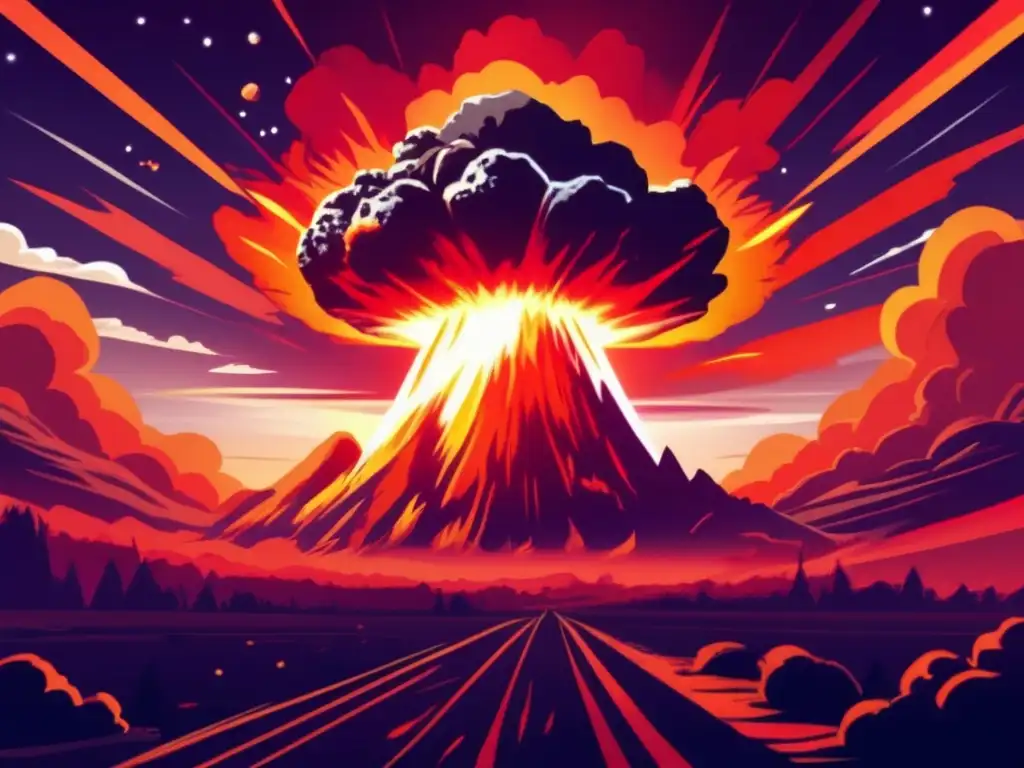Cosmic Catastrophe: The Asteroid That Reshaped Life On Earth

Introduction
Asteroids, also known as minor planets, are small rocky bodies that orbit the sun. They have existed for billions of years, and throughout history, they have fascinated scientists, astronomers, and space enthusiasts alike. While most asteroids have little impact on Earth, some have left indelible marks on our planet's history. In this article, we will explore the impact of one such asteroid, which had a catastrophic influence on life on Earth.
The Asteroid that Ended the Dinosaurs

The Size and Impact of the Asteroid
About 66 million years ago, an asteroid measuring about 10 kilometers in diameter collided with the Earth in what is now the Yucatan Peninsula in Mexico. The impact was so massive that it released energy equivalent to about a billion atomic bombs detonating at once. The impact left a crater over 180 kilometers wide and 20 kilometers deep. The asteroid's impact caused large earthquakes, tsunamis, and volcanic eruptions that covered the skies with ash, blocking out the sun's rays and causing a global cooling effect.
The Effect on Life on Earth
The aftermath of the asteroid impact had catastrophic effects on life on Earth. The loss of sunlight, combined with the cooling effect, led to the extinction of about 75% of all species on Earth, including the dinosaurs. The impact also affected marine life by causing massive waves and creating acid rain from the sulfur released during the collision..
The Discovery of the Impact
Scientists first discovered the crater associated with the asteroid impact in the 1980s. They initially believed it to be a volcanic caldera. However, subsequent investigations revealed that the crater was, in fact, a result of an asteroid impact. The discovery of this asteroid impact led to significant breakthroughs in the study of asteroid impacts, their effects on Earth’s history, and the search for ways to prevent future asteroid collisions.
How Asteroid Impacts Can Affect Earth

Potential Threats from Asteroids
Asteroid collisions with Earth can pose significant threats to life on our planet, depending on their size and impact location. While most asteroids that enter Earth's atmosphere burn up before reaching the ground, larger ones can cause significant damage, as demonstrated by the asteroid that ended the dinosaurs. The potential impact of a large asteroid can cause massive earthquakes, tsunamis, and volcanic eruptions, leading to widespread destruction and loss of life. Moreover, an asteroid’s impact can cause global climate change, which can affect the entire planet's ecosystem.
The Importance of Studying Asteroids
Studying asteroids and their potential impact can help us to better understand the risks they pose to Earth and find ways to mitigate these risks. Scientists continue to study asteroids to determine their size, trajectory, and potential impact, identifying potentially hazardous asteroids that have the potential to collide with Earth. The study of asteroids is also critical to advance our knowledge of the formation and evolution of the solar system and its planets.
Efforts to Prevent Asteroid Collisions
Various efforts are underway to prevent asteroid collisions, including NASA's Near-Earth Object (NEO) Program, which tracks and studies potentially hazardous asteroids and comets. Additionally, NASA is developing a planetary defense system to deflect asteroids away from Earth, including missions to test asteroid deflection techniques and technologies.
Frequently Asked Questions

-
What is an asteroid?
An asteroid is a small rocky body that orbits the sun. It is also known as a minor planet.
-
What caused the extinction of dinosaurs?
The extinction of the dinosaurs was caused by an asteroid impact that occurred about 66 million years ago, causing massive destruction and loss of life on Earth.
-
How can we prevent asteroid collisions?
Efforts are underway to prevent asteroid collisions, including tracking and studying potentially hazardous asteroids and developing deflection techniques and technologies to deflect asteroids away from Earth.
-
What is NASA's Near-Earth Object (NEO) Program?
NASA's Near-Earth Object (NEO) Program is an effort to track and study potentially hazardous asteroids and comets that could collide with Earth.
-
Why is studying asteroids important?
Studying asteroids is important as it helps us understand the risks they pose to Earth, advance our knowledge of the formation and evolution of the solar system, and find ways to mitigate the risks associated with their potential impact.
Conclusion
The asteroid collision that ended the dinosaurs is a stark reminder of the potential dangers of asteroids to life on Earth. By studying asteroids and their potential impact, we can better understand the risks they pose and develop ways to mitigate these risks. With continued research and development, we hope to prevent future cosmic catastrophes and ensure the safety of our planet for generations to come.
Thank you for reading this in-depth article on the asteroid that reshaped life on Earth. We hope you found it informative and educational.
Additional Resources

To learn more about asteroids and their impact on Earth, please visit the following links:
- NASA Near-Earth Object Program: https://www.nasa.gov/planetarydefense/neoo
- Asteroid impact map: http://www.purdue.edu/impactearth
- The Planetary Society: https://www.planetary.org/space-policy-and-advocacy/planetary-defense
 A Blast From The Past: Asteroids And The Dinosaur Demise
A Blast From The Past: Asteroids And The Dinosaur Demise When The Sky Fell: The Asteroid Impact Hypothesis
When The Sky Fell: The Asteroid Impact Hypothesis Beyond The Crater: The Aftermath Of The Asteroid Impact
Beyond The Crater: The Aftermath Of The Asteroid ImpactIf you want to discover more articles similar to Cosmic Catastrophe: The Asteroid That Reshaped Life On Earth, you can visit the Asteroids and Dinosaurs category.
Leave a Reply

Articulos relacionados: